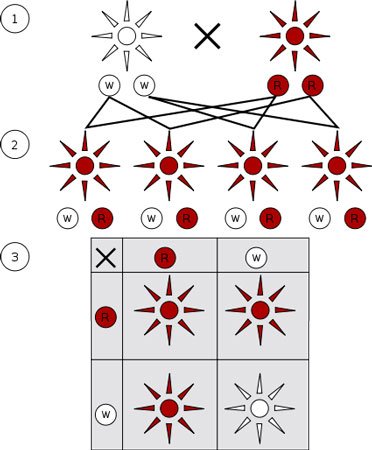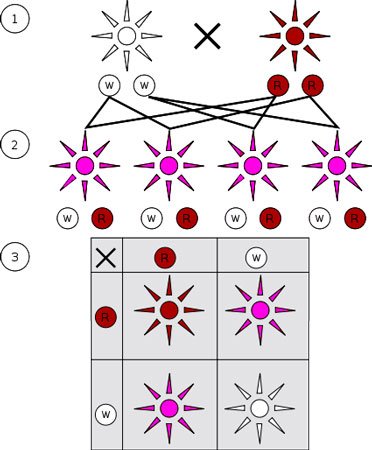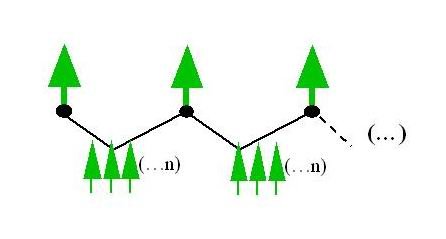Breeding Marijuana using Malawi Male
This was originally posted by me on Steemit years ago here, it explains how I bred the strains I made. It was put on hold for a few years after that because I had to fight for my Religion, which I had assumed they would accept in Colorado, but didn't because of their Greed and inability to function in the modern World without Marijuana taxes. But to think everyone or even most people would convert is just personal insecurity. People will choose the faith that suits them, just as an example in Colorado, most of those Mormons are pretty solidly Mormon.
https://steemit.com/cannabis/@marsresident/breeding-the-marijuana-strain-that-is-going-to-win-the-2019-colorado-cannabis-cup
The Dominant Recessive information at the beginning is from this website
http://www.growweedeasy.com/advanced-breeding-techniques#dominant-recessive-traits
Dominant & Recessive Traits
Some traits are “dominant” and some are “recessive”. This means that your plants can sometimes be carrying “hidden” traits which won’t show up unless you breed together two plants that both carry a copy of the hidden gene.
So for example, you could take two plants that grow green buds, but some of their offspring could produce pink buds. This means that the parents were carrying genes that can make pink buds and this recessive “pink” trait was brought out in their offspring.
Ultra-Quick Rundown of Mendelian Genetics & Inheritance
Knowing a little bit about genetics and inheritance will give you a huge advantage in your breeding program.
The first thing you need to know is that all plants (and animals) get two version of each gene, one from each of their parents. The interaction between the two versions of a gene can have a huge effect on your plant.
Mendelian genetics examines how plants and animals show different phenotypes depending on their genes.
So lets start by looking at dominant and recessive genes. Certain genes have complete dominance, which means they always “take over” if the plant has even one copy of the gene. Recessive genes will only show up in the phenotype if the plant got two copies of the same recessive gene from each of its parents.
The figures below show examples of Mendelian inheritance. This is super-simplified, but could help you get a better understanding of dominant and recessive genes.
Complete Dominance – Let’s say that cannabis plants can have a “red” or “white” version of a gene that controls bud color. The red version is completely dominant, and the white version is recessive. That means that (with these genes) the plant can only shows buds that are either red or white. It doesn’t “mix” them.
Let me give you an example with a diagram. “R” is the dominant gene in the diagram below. What that means is if a plant carries any copy of the “R” (red) gene than the buds will be red. The buds will only be white if the plant gets two copies of the “W” (white) gene. Let’s look at what happens over 3 generations if a plant with two “R” genes is bred with a plant that has two “W” genes.
Mendelian Inheritance Example – Complete Dominance

Mendelian inheritance diagram Source: Wikipedia
(1) Parent generation
(2) F1 generation
(3) F2 generation
You can see that the first generation (F1) above would produce only red flowers since all the offspring would get at least one copy of the “R” gene. But if you crossed those F1 plants together, you would get about 3 reds to every 1 white since you’d start getting plants that received two copies of the “W” gene.
But in many cases, genetics are not that simple. Not all genes follow the dominant-recessive pattern. Often it’s not a case of genes being only “on” or “off.” They may interact with each other to form new combinations. And to add to the confusion, certain traits are produced by the interaction of dozens or even hundreds of genes.
Incomplete Dominance – Let’s look at an example where the genes have incomplete dominance over each other. In these cases neither version of a gene is “dominant.” Instead they partially affect each other.
So what does that look like in practice? The next diagram shows an example of incomplete dominance.
Just like the above example, we start with two plants, one with two version of “R” (buds turn red), and the other with two “W” genes (buds turn white).
But this time both genes display “incomplete” dominance – it’s not that the offspring will show just one version or the other, but actually a mix of the two.
This time, when a plant gets one copy of “R” and one copy of “W,” the flowers will actually turn pink.
Neither version of the gene is completely dominant, so they influence each other creating a “mix” of the two versions of the gene.
Mendelian Inheritance Example – Incomplete Dominance

Non-Mendelian inheritance diagram Source: Wikipedia
(1) Parent generation
(2) F1 generation
(3) F2 generation
In this case, the first generation above would produce only pink flowers since all offspring would get one version of each gene. But if you crossed those F1 plants together, you would get a 25% chance of getting white or red, and a 50% chance of getting pink flowers.
But so much more can be affected by genes than just the color of cannabis buds. Smell, taste, mental effects and more are all affected greatly by the genetics of a plant.
One of the best ways to discover interesting hidden or recessive genes in your gene pool is to first cross your starting plants, and then cross their offspring together or “backcross” with their parents to see if new traits appear.
Once you’ve identified a trait you’d like to keep, then you can start crossing that plant with other members of its “family” until you’ve figured out which plants you need to breed together for their offspring to always show that particular trait.
Over time, growers can develop a whole “suite” of new traits that can be consistently bred from their genetic stock.
You may enjoy learning more about genetic inheritance. A great tool to help you visualize dominant and recessive traits is the Punnett Square (shown above) to help you predict how a particular plant cross might turn out. There are other inheritance factors, such as non-medelian inheritance and epigenetics, that can also affect how your plants grow.
Double Pair Mating

Double-pair mating (DPM) is a mating (crossing) design used in plant breeding. Each individual is mated with two others.
In Fig. 1 a connected variant of DPM is shown. DPM is an efficient mating design in balanced breeding programmes, where equal contribution from each breeding population member is desired.[1] With DPM the number of new families created is equal to the number of individuals mated. DPM allows to efficiently utilise positive assortative mating for more efficient use of the breeding population members for deployment to seed orchards.[2]In comparison with single pair mating, DPM has the advantages that the genes from the individual are transmitted to next generation even if one of the crosses fails; that safer estimates of breeding values of the parents get possible (useful for seed orchards, where tested trees are preferred); and that genes from different ancestors have a better chance to combine.
The Breeding Program
Once I am done with this grow and get started into the next one, I will buy another strain and I will start making videos and everything about it.
What I am doing currently is breeding Malawi, which is said to be the absolute most Psychoactive Sativa by some, meaning it is probably higher in THCv than strains like Durban Poison.
So what I am doing with the Malawi is Pollinating it with an Early Durban, which is a cross of Durban X Skunk #1. If you look at that Genetic chart, what this should do is draw those Durban THCv Genetics out of the Durban X Skunk #1, plus Skunk #1 itself has THCv Genetics. So if you look at that post that has the Genetic Chart, what I am doing is bringing out the THCv more than ever has happened naturally, because I am selecting for it.
Then I am also doing the opposite, I will be Pollinating the Early Durban with the Malawi, so this offers 2 different routes, where in 1 the Father is a Malawi, and in 1 the Mother is a Malawi.
Then I will cross the Malawi and the Early Durban Males with the Strawberry Diesel and the Strawberry Stardawg respectively, and then maybe cross those 2 crosses with each other.
Then say once I make all those 4 crosses, and cross each pair with their closely related pair, then breed those 2 strains that are made from breeding the 2 pairs, and breed those 2 strains into 1 strain. I will have created something that we have never seen before.
Then that other strain, I will be mixing that other strain in, and once I explain what it is I will also explain the strains that have been made with it. And at that point everyone is going to want to start making THCv strains.
or
(Malawi X Early Durban) X (Early Durban X Strawberry Stardawg)
(Early Durban X Malawi) X (Malawi X Strawberry Diesel)
Then cross those 2 strains to make 1 strain to cross with the other strain.
And then there is also the Early Durban X Hindu Kush making Gandhi Kush, which can be used to cross with the other strain to create a THCv Kush strain.
Then I am crossing the Banana Crack with the Blue Mystic, that isn’t going to be a THCv cross, but it has Banana OG genetics, and Blueberry Genetics, so I will see what that does, and maybe recross it with Banana Crack again, and also probably Elemental Seeds Honey Bananas. Then once that is just a crazy Terpene bomb I with cross it with the THCv strain.
And the Early Durban is really going to make this whole thing amazing.
First off, while Durban itself is a high THCv strain, and has structure and trichomb production that allowed it to become popular around the world, but not as popular as Skunk. Skunk pretty much changed the entire World of Marijuana in the 70s-90s by being a THCv strain that has good nugs. Plus Durban itself takes 14 Weeks to Flower, I think that is the thing that keeps most people away from African strains that are available now. People look at Strains online and first off they hardly look at landrace strains, but they are looking for Yield Size, and THC content. That is all almost anyone really cares about at all when looking for seeds. And when you see “14 Week Flower time” a lot of people don’t want to wait that long,especially since it has been illegal and people have been growing Primarily in closets since 1971 and the Controlled Substances Act.
What the Early Durban has done is bring the Durban Flowering time from 14 Weeks to 8 Weeks, like any regular Strain. But somehow no one has been growing it. If you Google “Early Durban” in quotes right now, you will read it is “One of the most popular outdoor strains” and “One of the most resilient strains”, but no one is saying “I grew it” or “I smoked it”.
And the Early Durban will be crossed with the Malawi and the Malawi with the Early Durban. Then the Early Durban will also be crossed with the Strawberry Stardawg.
And by the end of it, doing the:
(Malawi X Early Durban) X (Early Durban X Malawi)
X
(Strawberry Diesel X Malawi) X (Strawberry Stardawg X Early Durban)
The ratio will be about
6/16 Malawi
3/16 Durban
3/16 Skunk
4/16 Strawberry Holy Smoke Seeds mixes (which I have seen for sale for $60 an 8th, and read about people buying for $60 an 8th)
Then I will mix in the other THCv strain.
Whoa! Very detailed. I actually have bred a little as well. But purely for fun. I called it #steemog
Would love to pick your brain some more. Please join our discord
Ok, I will join soon. I need to get the app.
You should talk to
@steemitblog
@steemcurator01
@steemcurator02
And see if you could work out a Delegated Curation deal. I would be interested in helping however needed if they are reading now. It is my Religion.
And a have 1 lb of Chinese Hemp seeds too. So I have Marijuana and Hemp. I think the Hemp is called Chin Ma, I forgot the exact name.
I joined.
Thanks @kiwiscanfly
Thanks @rakkasan84
There are 3 Marijuana groups to my knowledge now.
Weed Memes
https://steemit.com/trending/hive-191728
Then I made Religious Marijuana and Marijuana Strains.
Im interested in genetics and marijuana did you know they finally are sequencing its genome. Making the strains history possible to verify. Also i cant really find marijuana communities in steemit i would appreciate advice
I have seen a few places doing DNA tests.